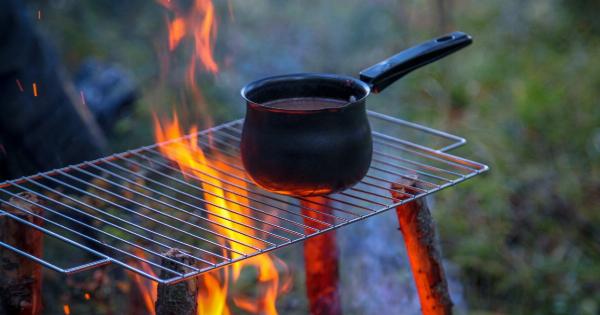When it comes to maintaining our refrigerators, many of us unwittingly make mistakes that can impact the efficiency, lifespan, and even the safety of these essential appliances.
To help you avoid these pitfalls, we have compiled a list of the top 10 mistakes you might be making with your refrigerator.
1. Ignoring the Temperature Settings
One common mistake is neglecting to set the temperature correctly. The ideal temperature range for a refrigerator is between 35 and 38 degrees Fahrenheit (2 to 3 degrees Celsius).
Failure to maintain this range can lead to spoilage of perishable items and uneven cooling.
2. Overloading the Fridge
Stuffing your refrigerator with too many items not only limits the airflow, but it also restricts the refrigerator’s ability to cool efficiently.
This can cause your fridge to work harder and consume more energy, leading to higher electricity bills. Consider decluttering and organizing your fridge regularly.
3. Placing Hot Foods Directly in the Fridge
Putting hot leftovers or cooked food directly into the refrigerator can significantly raise its internal temperature. This puts unnecessary strain on the cooling system, affecting the overall efficiency.
Allow your food to cool down to room temperature before refrigeration to maintain optimal performance.
4. Neglecting to Clean the Coils
Refrigerator coils are responsible for dissipating heat from the system. Over time, these coils accumulate dust, debris, and pet hair, hindering their ability to function properly.
Regularly cleaning the coils behind or beneath your fridge can enhance its cooling efficiency and extend its lifespan.
5. Storing Food in Unsafe Containers
Using improper containers for storing food in the fridge can be a grave mistake. Plastic containers that are not labeled as microwave-safe may leach harmful chemicals into your food when subjected to temperature changes.
Opt for food-grade glass containers to ensure the safety of your stored food items.
6. Misplacing the Thermometer
Many refrigerators have built-in thermometers, but they are often not placed in the correct location. The thermometer should be positioned in the warmest part of the fridge, usually the door.
Proper thermometer placement helps monitor the temperature more accurately and allows you to make adjustments if necessary.
7. Leaving Spills and Spoiled Food Unattended
Spills or spoiled food left unattended in your refrigerator can lead to cross-contamination and unpleasant odors. Regularly check for spills, clean them up immediately using mild soapy water, and discard any expired or spoiled items.
This simple practice helps maintain a hygienic and fresh-smelling refrigerator.
8. Not Regularly Defrosting the Freezer
If your refrigerator has a freezer compartment, failing to defrost it regularly can lead to reduced cooling efficiency and increased energy consumption. A significant ice buildup restricts airflow and reduces the available storage space.
Plan regular defrosting sessions to keep your freezer working optimally.
9. Ignoring the Door Seal Condition
The rubber door seal, or gasket, on your refrigerator is crucial for maintaining an airtight seal and efficient cooling. Regularly inspect the door seal for any signs of wear or damage.
A compromised seal can allow precious cool air to escape, forcing your refrigerator to work harder and increasing energy usage.
10. Not Performing Routine Maintenance
Refrigerators, like any other appliance, require regular maintenance to operate efficiently.
Neglecting routine tasks such as cleaning the interior, checking the water filters (if applicable), and inspecting the door hinges can lead to reduced performance and potential breakdowns. Set aside time for regular maintenance to keep your fridge running smoothly for years.






























